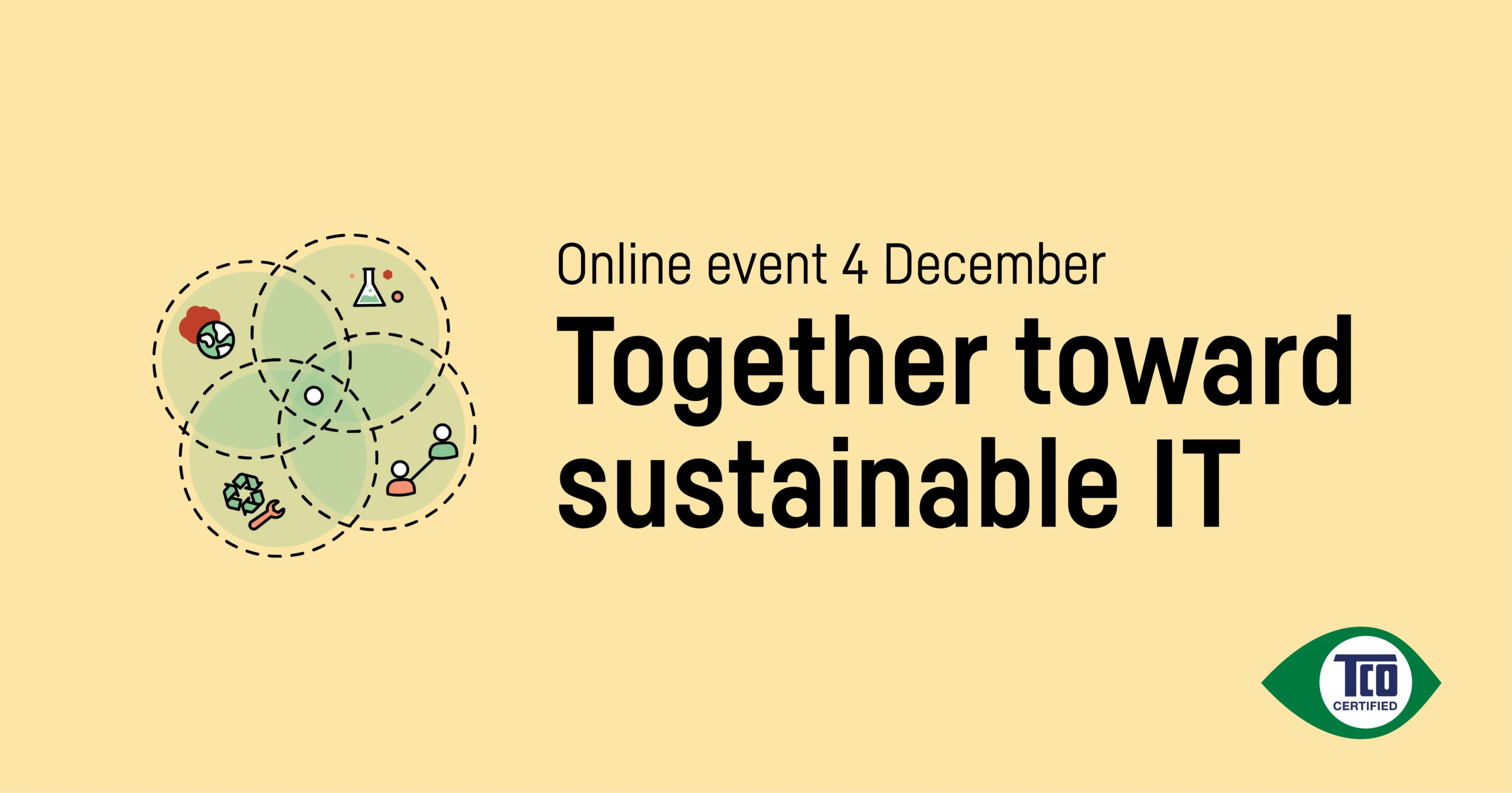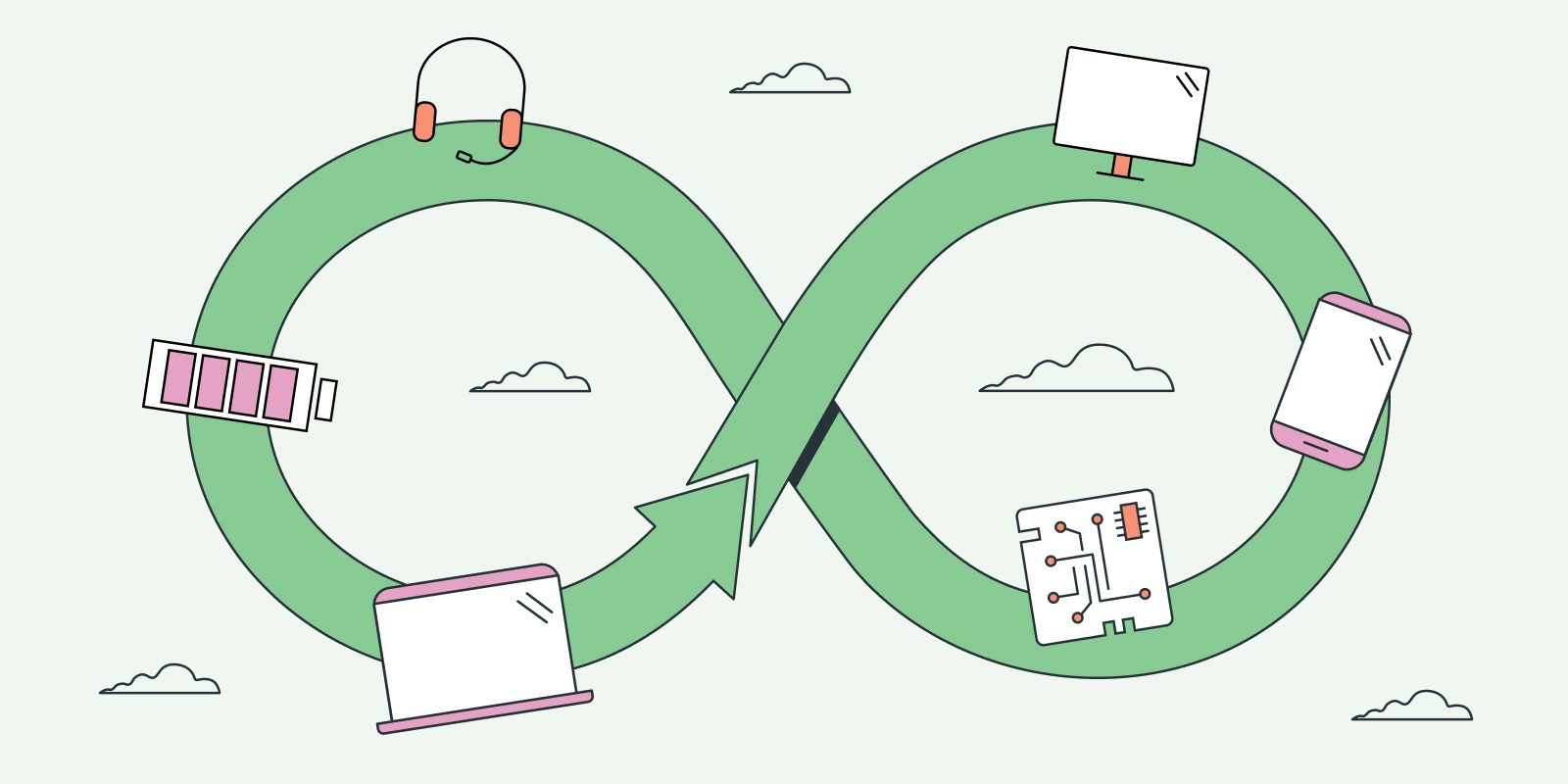E-waste tops the sustainability agenda and is one of the recurring talking points when addressing the circular economy. We recently hosted an online seminar on e-waste and invited a group of experts to talk about the issue. To follow-up on the questions received, we decided to let the experts answer your questions in this blog series.
Andreas Rehn, Development Manager at TCO Development, answers questions asked during our webinar How to reverse the growing negative trend of e-waste.
What is the role of the circular economy in reducing e-waste and who is responsible for this?
The role of the circular economy is to increase the amount of post-consumer content in new products, increase the reuse of products, and increase the extent to which products are repaired. Another area that many tend to forget is that the circular economy should also try to find new ways for a product to be used when the initial use case is not possible. We believe that the industry and the user of the product are both responsible for this.
What are your main recommendations for eco-design in products?
There are a couple of things that we should focus on in terms of eco-design. The first one is a no-brainer, and that is the durability of products. Manufacturing products that don’t break when dropped or exposed to the elements is key to extended product life. Second is the performance of a product. If original products have greater functionality, it is much more likely that a second-hand user can be found for the product, which in turn will help drive the switch to more circular solutions. My third recommendation would be to minimize the amount of hazardous substances that go into products. Doing this we will help create cleaner material streams coming from our recycling facilities, but also save lives and the environment when products do not get taken care of responsibly.
Hazardous substances are problematic in e-waste, how do you think this should be tackled?
With an accepted substance list that aims to push for better alternatives and increase transparency when it comes to chemicals used in products. This will make our material streams cleaner over time and make it easier for recyclers to handle.
What is the main problem with e-waste?
The main problem with e-waste is that it is perceived as waste and not as a resource. When it is not taken care of in a responsible way it risks contaminating nature and harming people.
How do you suggest this problem is tackled?
We believe it will take too much time for society to adopt a circular economy on its own. We therefore believe there is a need for certifications such as TCO Certified to help drive the industry in a more circular and sustainable direction. It must be done in steps that are reasonable but challenging. We adjust our criteria every three years to ensure continuous development and push for more circular products.
We work with all the steps in the circular economy covering the life cycle of the product. For example, TCO Certified Edge includes criteria on 85% post- consumer recycled plastics in new products. TCO Certified includes criteria to prolong the lifetime of products to increase the amount of time they are used and reused. Examples of criteria are the availability of spare parts, repair manuals, replaceable batteries and so on. It also includes criteria on the takeback and recycling and e-waste collection once a product reaches the end of its life.
What is your final message on what should be done to reverse the negative growing trend of e-waste?
Purchasers and consumers have considerable influence and can drive the industry in a more circular direction by demanding products following a more circular approach. The easiest way to do this is to ask for products that are independently certified against criteria that are relevant, realistic, and actually fulfilled.
More answers from our panelists
Pascal Leroy on the importance of enforcing regulations for e-waste
Sofia Nygård wants IT buyers to keep it simple and be brave
Joost de Kluijver calls for circular solutions for e-waste
Andreas Rehn talks about circular actions to reduce e-waste




